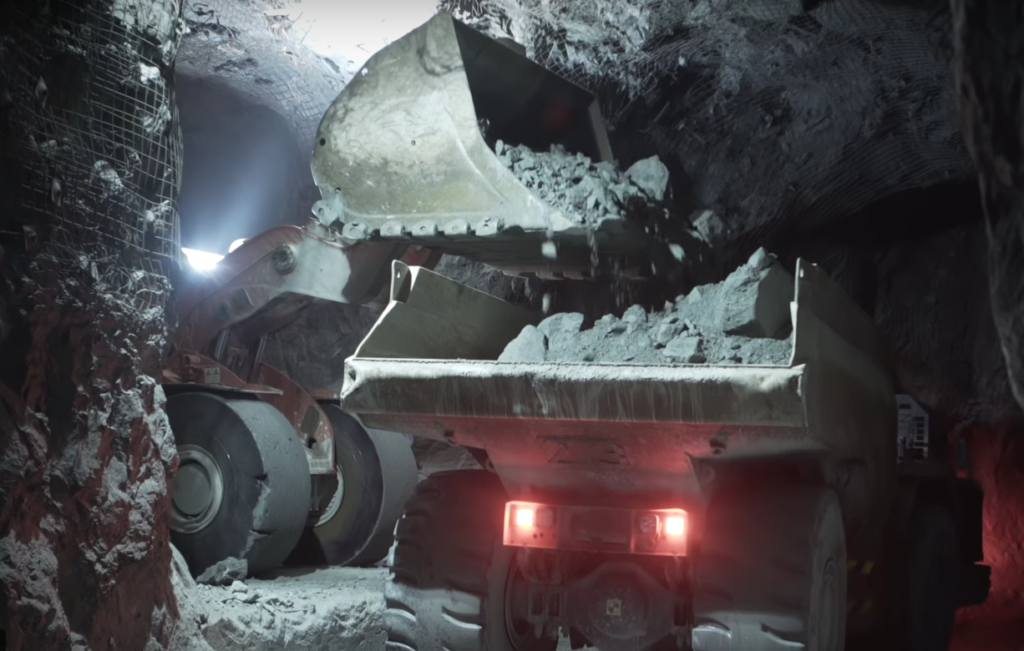The North American Palladium (NAP) Lac des Iles (LDI) palladium mine is located 90 km northwest of Thunder Bay in Ontario. One of only two primary palladium producers in the world, LDI began operation in 1993 as an open pit. Underground mining started in 2006. In 2013, the mine transitioned from ramp access to shaft access. With more than 600 employees, the mine has 40.9 Mt of reserves at an average palladium grade of 2.31 g/t. In a recent customer focus article in its Solid Ground series, Sandvik outlined in detail the mine’s revival with new mining methods and the start of its autonomous mining journey.
After years of capital challenges and engineering issues threatened the palladium mine’s future, LDI returned to profitability in 2017, thanks in large part to a transition from longhole stoping to a sublevel shrinkage mining method. The former method left ore in remnant pillars and created challenging oversized muck and ground control issues. Sublevel shrinkage, a modified version of sublevel caving, has enabled better fragmentation, 100 percent ore extraction and a significantly more consistent production rate in the mine’s lowest levels. The new method helped LDI double daily underground production from 3,000 t in 2015 to 6,000 t in 2017 while steadily reducing cost per tonne. NAP is also implementing technology to improve processes, increase efficiency and extend mine life.
“We believe that we’ll be very close to being in the 29-dollar-a-tonne-range,” said Jim Gallagher, NAP President and CEO in the Sandvik interview. “That’s our target and that’s what we’re pursuing, and we believe technology is going to be key to getting there. The technology is there now to accomplish what the visions used to be, to drive major productivity improvements.”
LDI originally installed a fiberoptic backbone for seismic monitoring, but the mine soon saw far greater potential and began installing wireless hotspots and sensors to enable equipment and personnel tracking. “We’re a relatively low-grade mine, but now we’re a big bulk mine,” Gallagher says. “The key has been getting the production rate up and getting operating costs down, and technology has been a big part of that.”
Eager to unlock even more value mucking between shifts and during other nonproductive time, LDI purchased the Sandvik LH514 and put it to work on the longest tram for any loader in the mine – a 500 m route rife with corners. “We wanted to really test its capabilities,” Wilson says. “We knew that an operator on a 12-hour shift, when he travelled underground, could achieve 30 buckets. We’ve seen 50 buckets out of that same stope. To allow that operator to sit on surface, that’s a fantastic improvement. To be able to muck in between shifts and keep those machines going, it doesn’t take very many trucks and buckets before this thing pays for itself very easily. If I can get three truckloads in between those shifts, this thing will pay for itself within months.”
“Automation is the way the industry’s going, so this lets us test it in an environment where we can prove that it’s successful and plan for the expansion as we plan our life of mine around automation and improving the safety of the workforce and improving the productivity of our equipment as well,” Galea says. Commissioning and infrastructure installation for the automated loader took less than 60 days from the purchase order. “The implementation of automation with Sandvik has been very quick and easy,” Galea says. “The support was great up front and we’ve worked closely with Sandvik on other improvements.” The partners also optimised design of the mine’s loader buckets and truck boxes to accommodate the sublevel shrinkage mining method and smaller, lighter ore.











